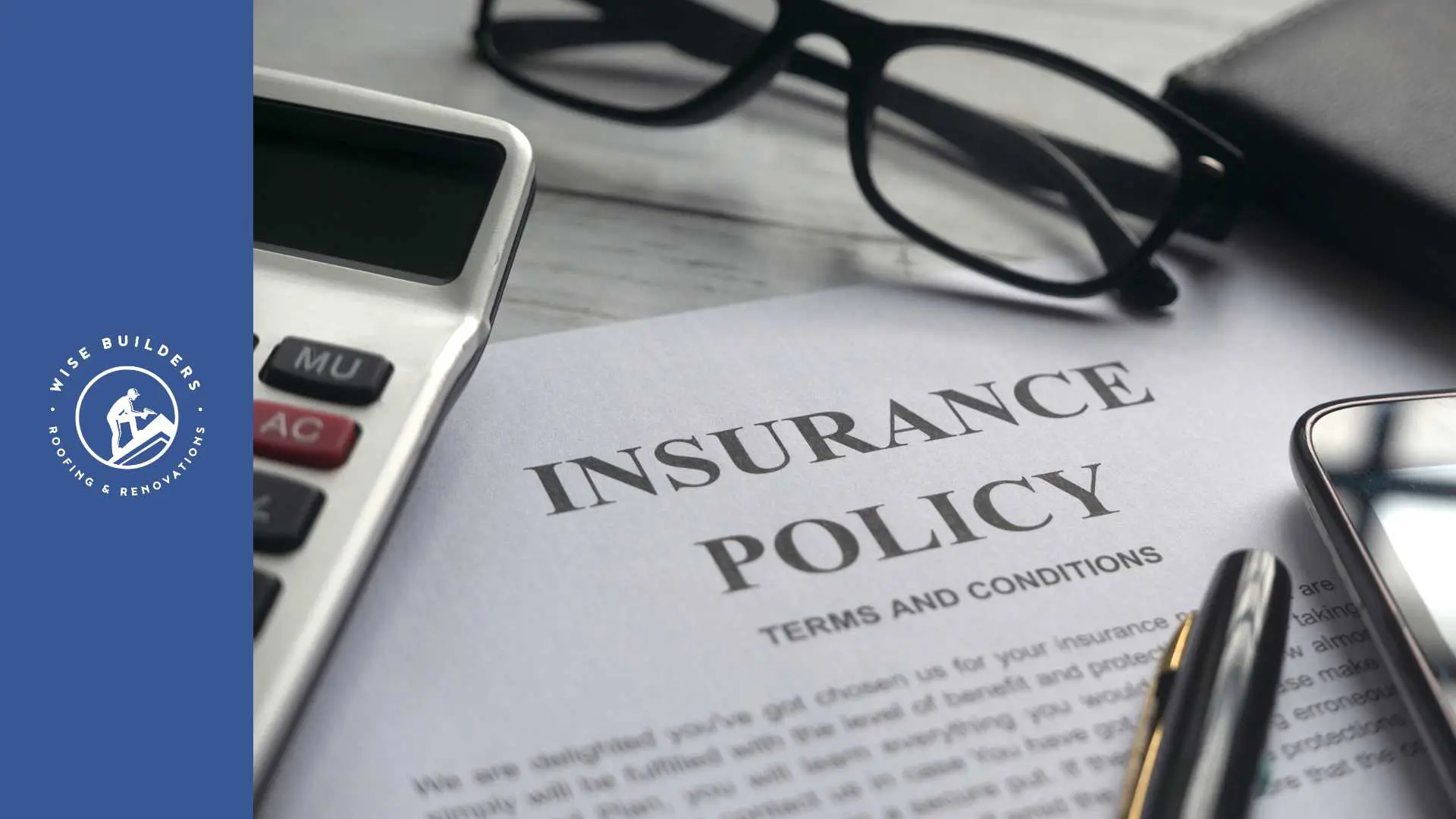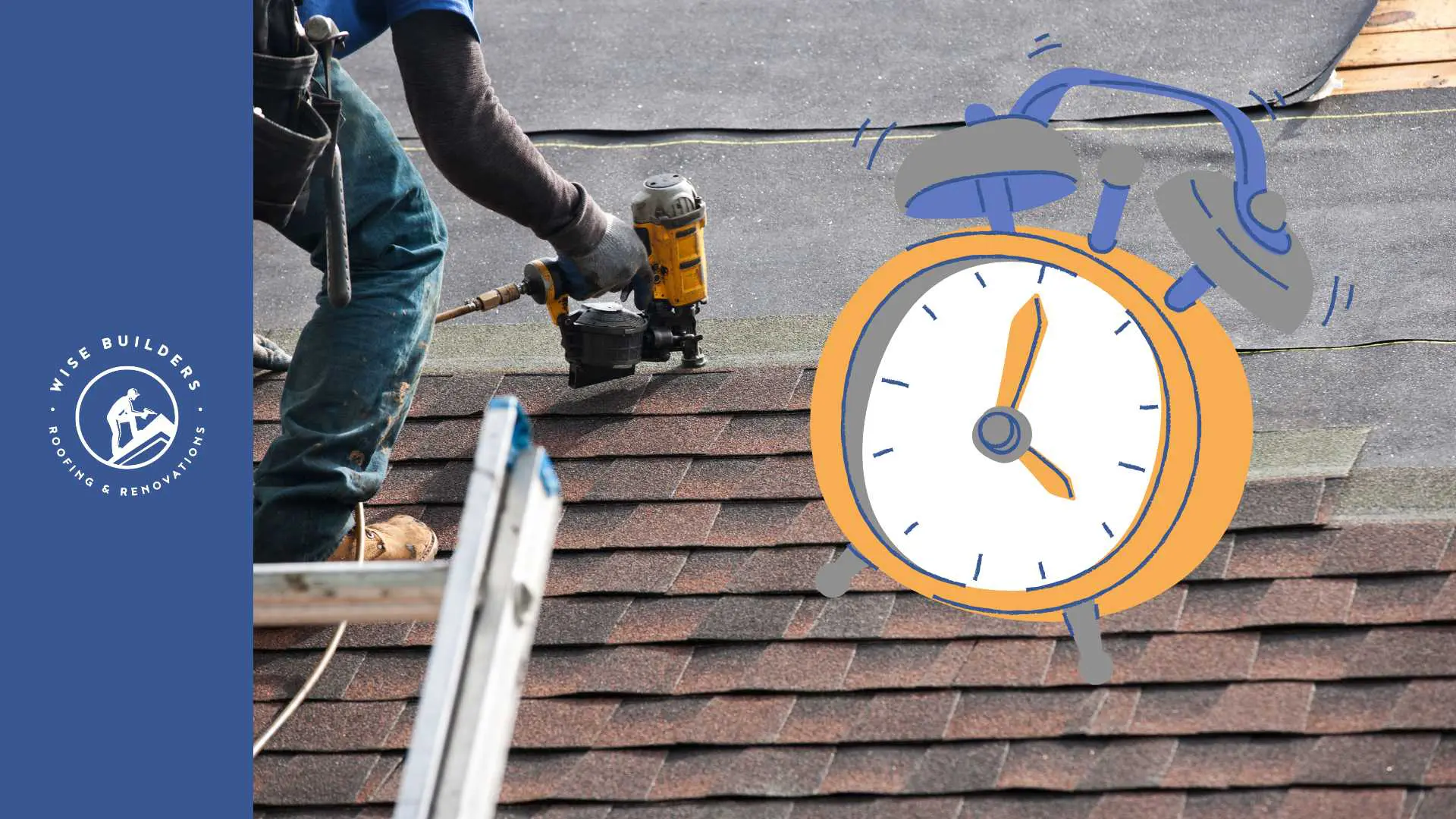
Key Highlights
- Strong winds can significantly damage roofs, especially to asphalt shingles, compromising a home’s protection.
- Wind damage manifests in various ways, including missing, creased, or damaged shingles, often accompanied by granule loss.
- Inspecting your roof after severe weather, looking for lifted shingles, damaged flashing, or interior water stains is crucial.
- Immediate action is necessary if wind damage is suspected – document the damage, contact your insurance provider, and hire a professional roofing contractor for repairs.
- Regular roof maintenance and inspections can prevent extensive damage, ensuring its longevity and your home’s safety.
Introduction
Wind damage on roofs presents a common problem for homeowners, especially those residing in areas prone to high winds and severe storms. Understanding the impact of wind on shingles and recognizing the signs of damage is paramount for promptly mitigating potential problems. This guide examines the ways high winds affect roofing shingles and explores common indicators of wind damage. By understanding the mechanics of wind damage and the warning signs, you can take timely action to prevent further harm to your roof and home.
Understanding Wind Damage to Roof Shingles

Wind damage to asphalt shingles is a prevalent issue faced by homeowners. High winds can exert tremendous force on a roof, leading to various problems. The extent of wind damage on your roof depends on factors like wind speed, the age and condition of your shingles, and even the roof’s design.
Asphalt shingles, while designed to withstand normal weather conditions, become vulnerable during strong winds. High wind speeds can cause shingles to lift, curl, or even tear off entirely. This exposes the underlying layers of your roof, making it susceptible to leaks, moisture, and water damage. Recognizing the impact of high winds on asphalt shingles is vital for addressing potential issues promptly.
The Mechanics of Wind Damage on Residential Roofs
Roof wind damage is often a result of powerful forces acting upon a structure, as noted by the National Weather Service. Strong winds, especially those exceeding 45 mph, possess the strength to create uplift pressure beneath roofing shingles. This pressure can loosen or completely detach shingles, compromising the roof’s protective barrier.
Furthermore, the impact of windborne debris, such as tree branches or other loose objects, can cause significant damage to shingles. The force of these projectiles can crack, dent, or even puncture shingles, rendering them ineffective in preventing water intrusion.
It’s crucial to remember that roof wind damage isn’t always immediately apparent. Sometimes, damage can be subtle, like lifted or creased shingles that haven’t detached. These seemingly minor issues, including creases in the shingles, can escalate if left unaddressed, eventually leading to leaks and more extensive problems.
How Wind Patterns Affect Shingle Durability
Wind patterns play a significant role in shingle durability and the overall lifespan of your roof. Continuous exposure to strong winds, especially in areas with prevailing wind patterns, can gradually weaken shingles and shorten their lifespan.
Higher wind speeds can cause shingles to lift and flap repeatedly, leading to stress on the sealant strips and fasteners. Over time, this constant movement can degrade the sealant, making shingles more susceptible to wind uplift and water penetration.
Moreover, wind can carry abrasive particles like dirt, sand, and debris, which can bombard the surface of shingles, causing gradual erosion and granule loss. As granules wear away, the underlying asphalt layer becomes exposed to UV radiation, leading to premature aging and deterioration. Understanding how wind patterns affect shingle durability can help homeowners take preventative measures, such as investing in impact-resistant shingles or ensuring proper attic ventilation to mitigate potential problems.
Identifying Signs of Wind-Damaged Shingles

Recognizing the signs of wind-damaged shingles is crucial for homeowners. Early detection allows for timely repairs, preventing further damage and costlier interventions later on.
Missing shingles represent one of the most obvious signs. However, even subtle indicators like granule loss or lifted shingles should not be ignored. Conducting regular roof inspections, especially after a windstorm, helps identify these signs and ensure your roof’s longevity.
The Appearance of Missing or Broken Shingles
Missing or broken shingles are perhaps the most glaring indicators of wind damage. After a storm, carefully inspect your roof and yard for any detached shingles. These are undeniable signs that the wind has caused widespread damage to your roof, and repairs are likely necessary.
Apart from completely missing shingles, you might find broken pieces or shingles hanging precariously. This, too, points towards wind damage and requires immediate intervention to prevent further deterioration and potential leaks.
Here’s what to look for:
- Shingles in your yard or around your property.
- Bare patches or exposed underlayment on your roof.
- Shingles that appear torn, lifted, cracked, or out of place.
These are clear indicators that wind has compromised your roof’s integrity, and professional attention is needed.
Granule Loss: A Subtle Indicator of Wind Damage
While missing shingles are a clear sign of roof damage, granule loss often goes unnoticed. Granules are the small, protective pebbles that coat asphalt shingles, providing weather resistance and aesthetic appeal. Wind damage can dislodge these granules, leading to a less visible but equally concerning problem.
One way to detect granule loss is to check your gutters and downspouts for an excessive accumulation of shingle granules, especially after a windstorm. Another indicator is the appearance of bald spots, discoloration, or areas where the shingle’s asphalt base is visible.
Granule loss exposes the underlying asphalt to the elements, making it susceptible to UV damage and premature aging. This compromises the shingle’s effectiveness, shortening its lifespan and leaving your roof vulnerable to leaks.
Immediate Steps After Detecting Wind Damage
After a windstorm, it’s essential to promptly inspect your roof. If you notice signs of wind damage, taking immediate steps is crucial for preventing further deterioration and ensuring the safety of your home. Begin by documenting the damage with photographs or videos to help streamline the claims process.
Contact your insurance company to report the damage, and then reach out to a reputable roofing contractor. A professional evaluation can accurately assess the damage and determine the necessary repairs, ensuring your roof warranties are restored to its optimal condition.
Assessing the Extent of Damage Safely
While it might be tempting to assess the roof damage yourself, prioritize safety above all else. Walking on a damaged roof can be extremely dangerous, especially after a storm. It’s advisable to observe visible damage from the ground and avoid climbing onto the roof unless you have the proper safety gear, training, and experience.
Binoculars or a camera with a zoom lens can be helpful in getting a closer look at the roof without putting yourself at risk. Look for missing or damaged shingles, lifted flashing around chimneys or vents, and any signs of water intrusion in your attic.
If you suspect significant damage or are unsure about the extent of the problem, it’s best to leave the assessment to a professional roofing contractor. They possess the expertise and safety equipment to inspect the roof thoroughly and provide an accurate evaluation of the situation.
When to Call for a Professional Roof Inspection
Determining when to call a professional roofer for an inspection is crucial in addressing potential problems before they escalate. While minor damage might seem manageable, it’s essential to remember that even small issues can compromise your roof’s integrity.
Professional roofers possess the trained eye to identify subtle signs of damage that homeowners might overlook. They can assess the overall condition of your roof, including areas not readily visible from the ground, and provide expert advice on necessary repairs or replacements.
Here are situations where calling a professional roofing contractor for an inspection is highly recommended:
| Situation | Action |
| Visible damage to shingles or flashing | Call for professional inspection immediately |
| Leaks or water stains on your ceiling | Call for professional inspection immediately |
| Granule loss observed in gutters or downspouts | Call for professional inspection promptly |
| After any significant weather event | Schedule an inspection as a precaution |
Prompt action ensures small problems don’t transform into major expenses and keeps your roof in optimal condition.
Conclusion
It is crucial to promptly address wind-damaged shingles to maintain the integrity of your roof. By recognizing the signs early and taking immediate action, you can prevent further deterioration and costly repairs. Regular roof inspections are essential to catch wind damage early on. If you suspect wind damage, ensure to assess the extent of the damage safely and consider seeking professional inspection when needed. Protect your home by staying vigilant and proactive in maintaining your roof’s condition. Remember, a proactive approach can save you from more extensive repairs down the line.
At Wise Builders, we ensure our clients receive the best possible outcomes. Our commitment to quality workmanship and customer satisfaction is unwavering, making us the top choice for residential Roofing services in Mobile, AL.
Frequently Asked Questions
How often should homeowners inspect their roofs for wind damage?
Homeowners should inspect their roofs for signs of wind damage at least twice a year, ideally during spring and fall, and especially after severe weather events. Regular inspections contribute to preventative maintenance, catching potential issues early on.









